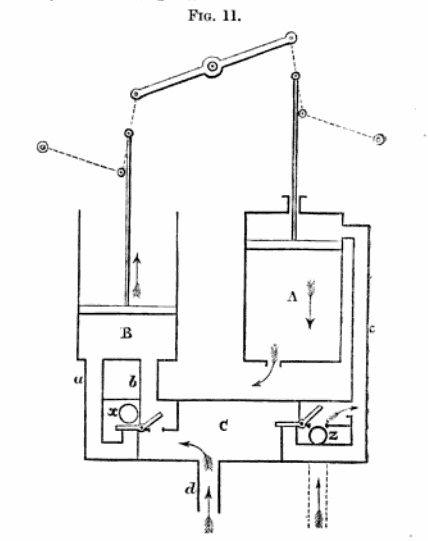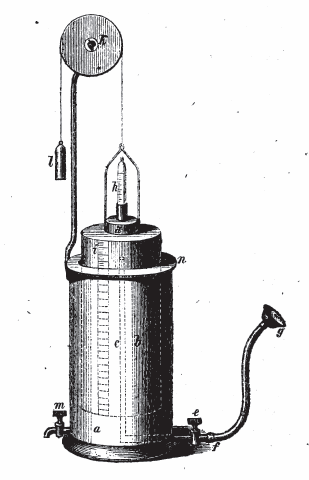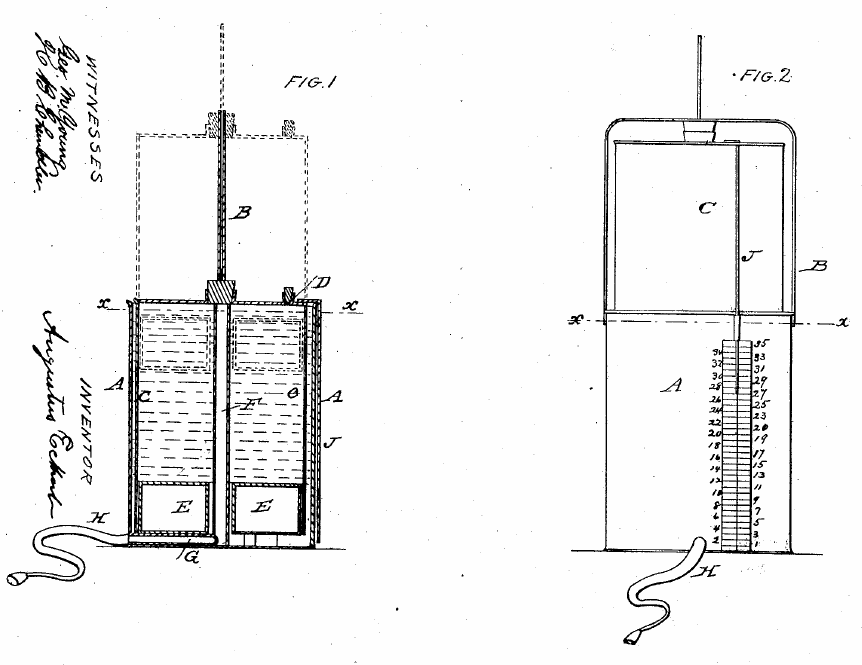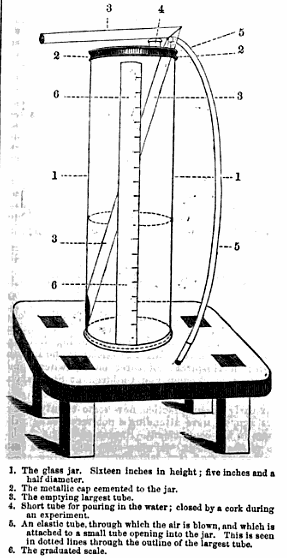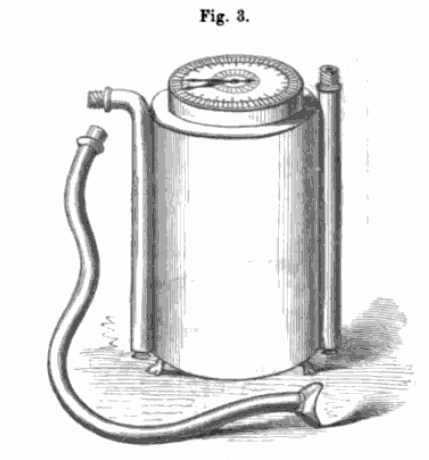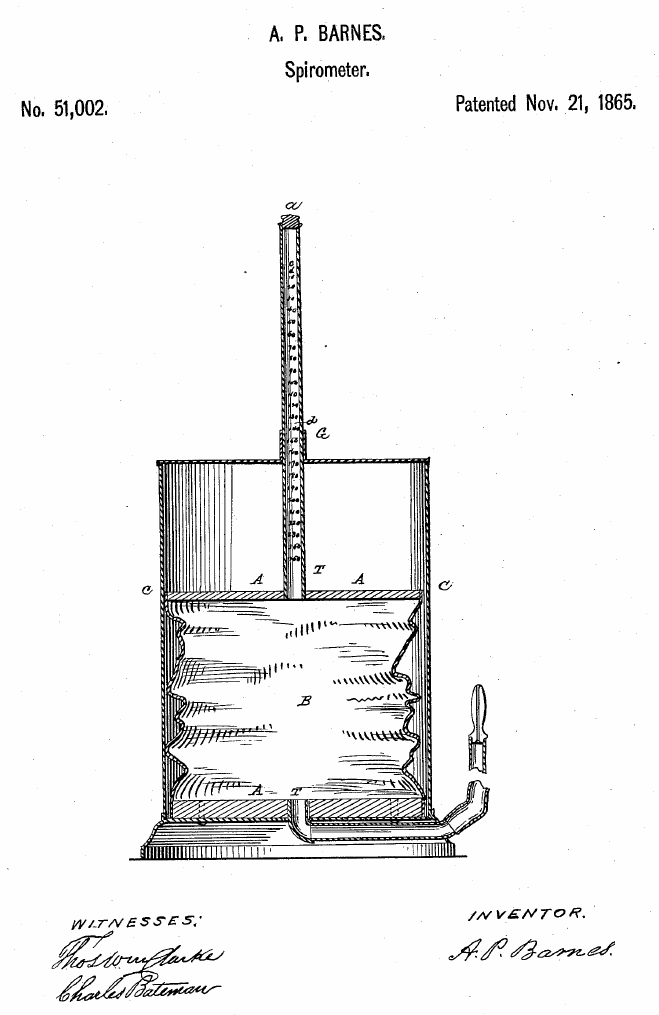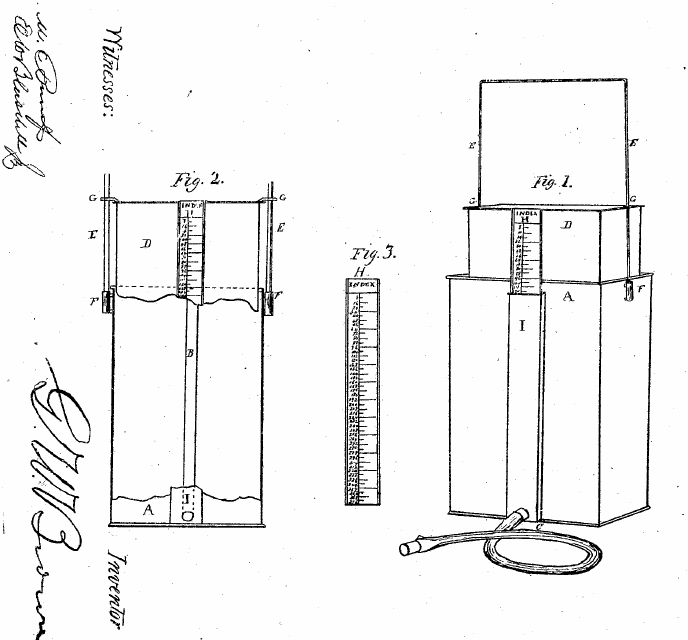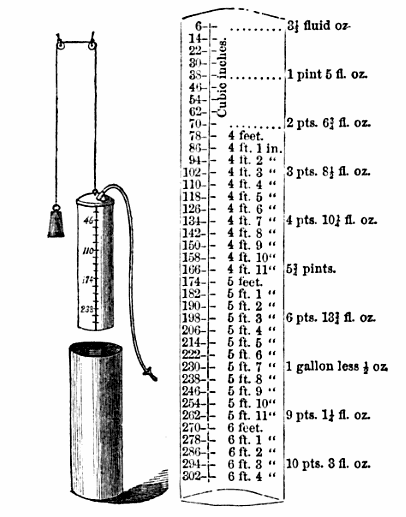
From: The Half-yearly Abstract of the Medical Sciences: Being a Digest of British and Continental Medicine, and of the Progress of Medicine and the Collateral Sciences, Volume 38, 1864, page 132. Original article by W. E. Bowman from the Canada Lancet, June 15, 1863.
“A cheap spirometer may readily be made from two tin vessels similar to shape of the ones figured in the accompanying woodcut; the one should be 20 inches long and 6 inches in diameter and the other 18 inches long and 5 inches in diameter. The latter may be graduated into spaces of 8 cubic inches by means of our ordinary gallon measure, which is the old wine measure of Great Britain, and the one that is adopted by the United States Pharmacopaeia; it consists, as everybody knows, of 8 pints of 16 ounces each, the ounce meauring 1.8 cubic inches.
“Having placed the smaller vessel perfectly upright, measure into it a gallon of water, less half an ounce, and with a rule ascertain the precise distance from the surface of the liquid to the brim of the vessel, then placing this measure outside the tin, mark the height of the water as 230 cubic inches. In a similar manner with half a gallon and 10-1/4 fluid ounces mark 134 cubic inches.
“Next, divide the space between these two marks into 12 equal parts, which will measure 8 cubic inches each and with the compasses continue the graduation upwards and downwards, placing the figures on the inverted vessel as here shown. If its diameter be everywhere alike, the measure must be correct; its accuracy however may be readily tested by the annexed subdivisions of the same measure. The pulleys and counterpoise may now be adjusted to the graduated tin.
“Next fill the larger vessel with water so that the smaller may be just covered when inserted as low as possible into it, and mark the height of the water on the inside of the tin. Then raise the small one gently until the 174 cubic inch line appears even with the surface of the water and make a second mark of its level. Finally, put the third graduation on the large tin when the smaller is raised completely out of it.
“Lastly, affix 2 or 3 feet of flexible tubing and a mouthpiece to the top of the small tin and the spirometer will be ready for use.”
